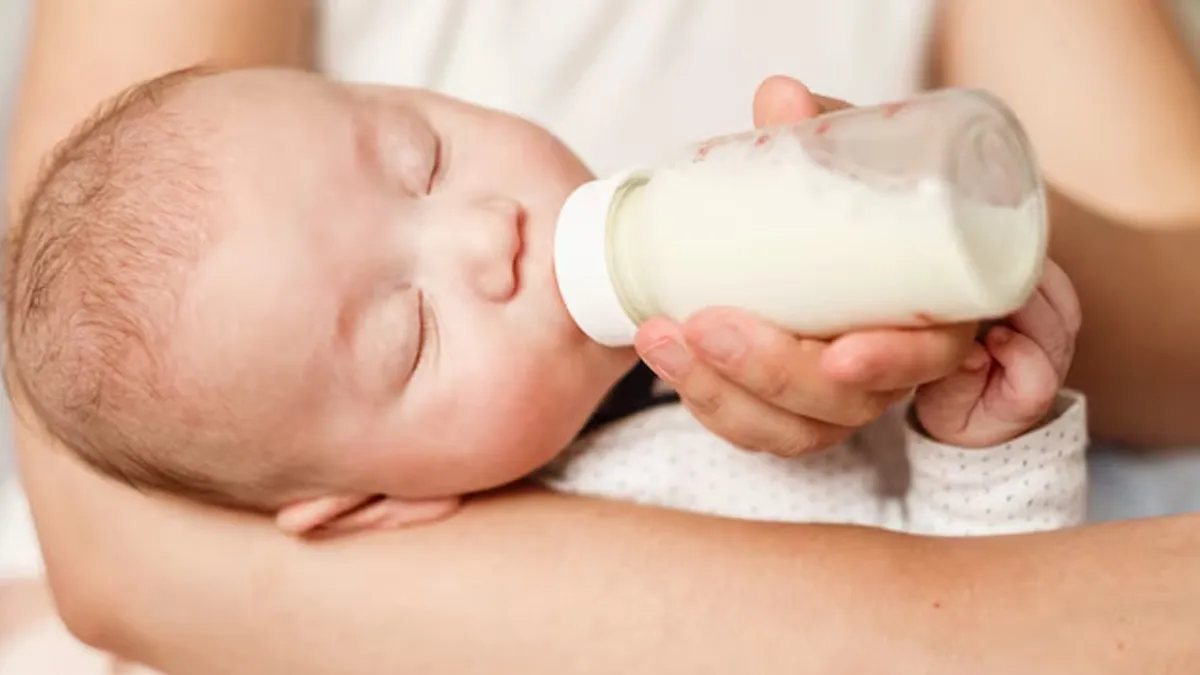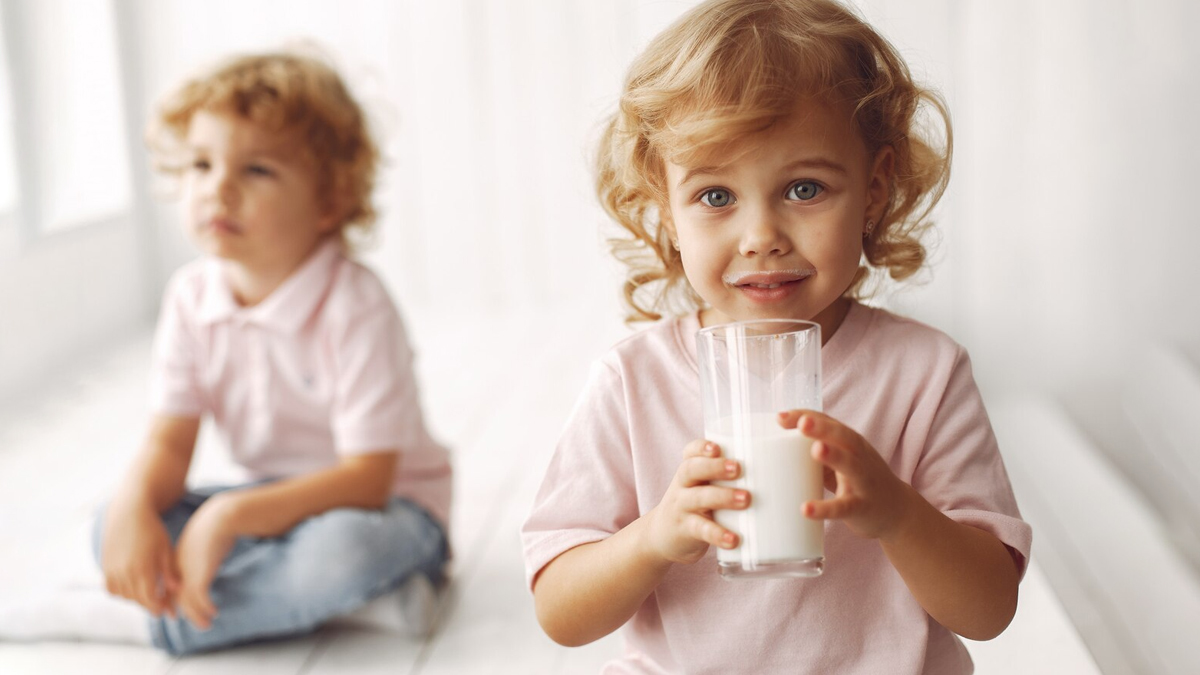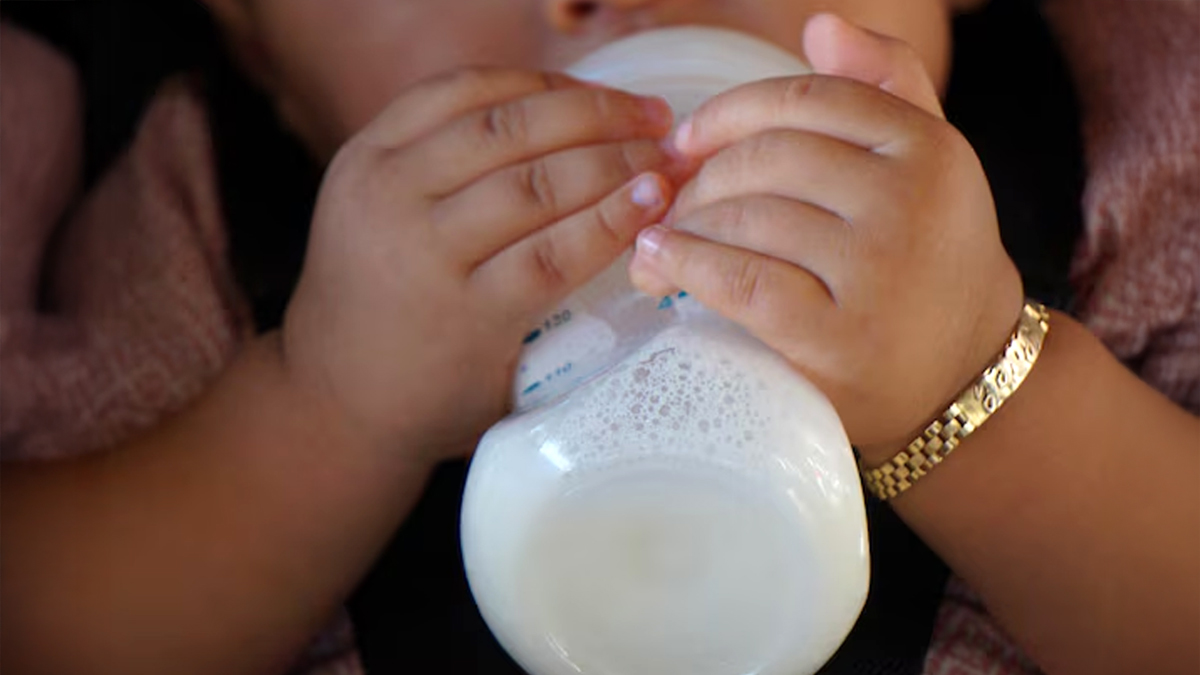
Recently, a video of a man feeding a baby milk directly from a cow's udder went viral, which sparked anger and frustration among netizens. The video, posted on X with the caption, "Is this good for a baby? Please answer, "depicts a man smiling as he feeds the baby raw, unpasteurised milk.
Table of Content:-
While generally people encourage consumption of organic food and drinks, one might wonder whether raw milk is any good, especially for children. Speaking with the OnlyMyHealth team, Dr Amit Kumar Modi, Associate Professor, Department of Paediatrics, NIIMS Medical College & Hospital, Noida, explains the difference between raw and pasteurised milk and why parents should avoid giving raw milk to kids.
Also Read: Potential Health Benefits Of Consuming Raw Malai
Raw Milk Vs. Pasteurised Milk: What Is The Difference?

Milk is a staple for children, often the only source of nourishment and strength, particularly in children below six months of age. But not all milk is created equal, especially when it comes to safety.
Raw milk is milk that hasn’t gone through the pasteurisation process, which means it hasn't been heated to kill harmful bacteria. Pasteurised milk, on the other hand, has been treated at a high temperature for a short time to destroy pathogens without affecting its taste or nutritional value.
Some believe raw milk is more natural or nutrient-rich, but according to experts, the health risks far outweigh any perceived benefits, especially for children.
Why Children Shouldn’t Be Given Raw Milk

Dr Modi strongly advises against giving raw milk to children. “Raw milk can contain harmful bacteria (like E. coli, Listeria, Salmonella, and Campylobacter) that can lead to serious illnesses in children, such as diarrhoea, kidney failure, or even meningitis,” he says.
According to the Centers for Disease Control and Prevention (CDC), from 1998 through 2018, there were 202 outbreaks linked to drinking raw milk, reports the US Food and Drug Administration (FDA). "These outbreaks caused 2,645 illnesses and 228 hospitalisations," the health authority adds.
Unlike adults, children have developing immune systems and are less able to fight off infections. A child who drinks contaminated milk could become seriously ill in a very short time. And the truth is, these risks are completely preventable with pasteurisation.
Also Read: Raw Milk Risk: Study Finds Flu Virus Can Linger for Days, Sparking Health Concerns
Which Age Group Is The Most Vulnerable?
Infants and young children under the age of five are the most vulnerable to raw milk-related infections. “Their immune systems are still developing, making them highly susceptible to severe outcomes,” says Dr Modi. But they’re not the only ones at risk. Pregnant women, older adults, and people with weakened immunity should also steer clear of unpasteurised milk.
In these groups, an infection from bacteria found in raw milk can lead to life-threatening complications. That’s why health bodies across the world, including the CDC and FSSAI, recommend avoiding raw milk entirely.
How Parents Can Ensure Safety

So how can parents make sure the milk they’re giving their children is safe?
“Giving kids only pasteurised milk is the safest course of action,” says Dr Modi. If you’re buying milk from local farms or small dairies, make sure it’s been pasteurised and stored at the right temperature. Always check the label and buy only from trusted, regulated sources.
At home, refrigerate milk as soon as possible, and don’t leave it out at room temperature for too long. Use clean containers and wash your hands before handling it; these small steps can help prevent contamination.
Conclusion
Raw milk may sound wholesome, but it can be dangerous, especially for children. While the nutritional difference between raw and pasteurised milk is minimal, the safety difference is huge. Parents and caregivers should always prioritise pasteurised milk to ensure their children stay healthy and protected.
Also watch this video
How we keep this article up to date:
We work with experts and keep a close eye on the latest in health and wellness. Whenever there is a new research or helpful information, we update our articles with accurate and useful advice.
Current Version